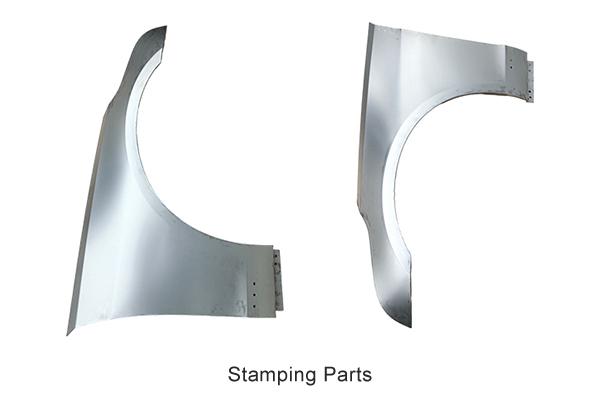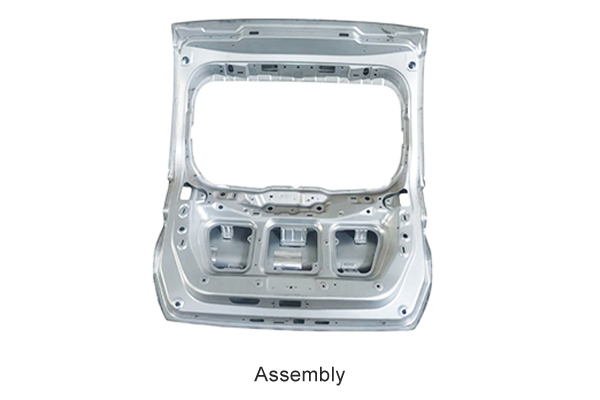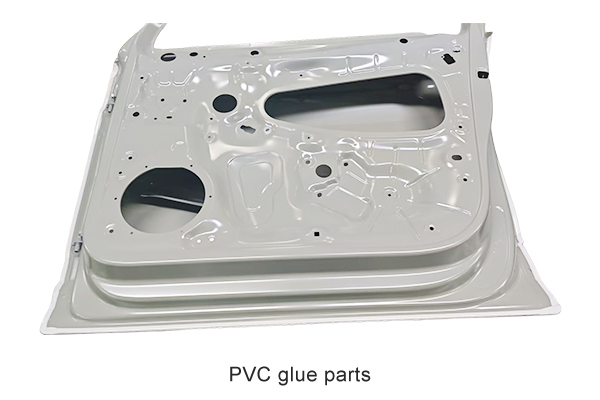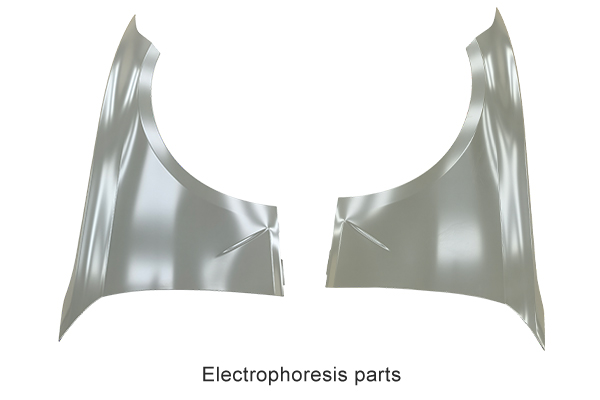How do PVC coating services balance coating thickness and toughness on automotive chassis components?
Release Time : 2025-10-20
In modern automotive manufacturing, chassis components are critical components subject to impact, vibration, and complex environmental corrosion. Their protective performance is directly related to the durability and safety of the entire vehicle. As a mature and effective protective technology, PVC coating services are widely used in chassis weld sealing, stone chip protection, and sound insulation and vibration reduction. However, in practical applications, achieving the optimal balance between coating thickness and toughness is a core technical challenge that determines the performance of PVC coating services. Excessively thick coatings may cause cracking, sagging, or affect assembly, while too thin coatings may not provide adequate impact resistance and sealing. Therefore, scientifically controlling the relationship between these two factors is key to improving the protective quality of automotive components.
1. Coating Thickness: The Fundamental Guarantee of Protective Performance
One of the primary functions of PVC coating services on chassis components is to protect against high-speed impact from road debris and prevent scratches and rust on the metal substrate. Experiments have shown that coating thickness directly affects its energy absorption capacity and penetration resistance. Typically, the dry film thickness of chassis protection PVC coatings needs to be between 1.5mm and 3.0mm to effectively cushion impact energy. This is especially true in areas prone to stone impact, such as wheel arches, lower front dashes, and longitudinal beams. Sufficient thickness is essential for long-term protection. Furthermore, weld sealing requires the PVC coating to completely fill gaps, preventing the intrusion of moisture and corrosive media. This also requires a certain thickness to ensure sealing integrity. However, blindly increasing the thickness can lead to a series of problems. Excessively thick PVC coatings can easily generate internal stress during the curing process, leading to surface cracking or edge cracking. Under the repeated vibration and temperature fluctuations of vehicle operation, thick coatings are more susceptible to stress concentration, causing delamination or peeling. Furthermore, excessively thick coatings increase vehicle weight, inconsistent with the trend toward lightweight vehicles, and may affect assembly clearances between surrounding components.
2. Toughness: A Key Parameter for Dynamic Stress
Toughness is the ability of a PVC coating to absorb energy without cracking when subjected to impact, bending, or vibration. High toughness means the coating possesses good elasticity and ductility, allowing it to expand and contract with the subtle deformation of chassis components during vehicle operation, preventing brittle fracture and resulting in protective failure. Especially in low winter temperatures, ordinary PVC materials tend to become hard and brittle, losing their elasticity and dramatically reducing their impact resistance. Therefore, improving the low-temperature toughness of PVC coatings is a key technical challenge. Toughness not only affects stone impact resistance but also the coating's fatigue resistance. During long-term driving, the chassis is constantly subjected to jolting and torsion. Coatings with insufficient toughness can develop microcracks due to repeated stress, eventually expanding into macrocracks, allowing moisture and salt spray to penetrate and causing corrosion of the substrate.
3. Achieving a Scientific Balance between Thickness and Toughness
To achieve the optimal balance between thickness and toughness, coordinated optimization is required in three aspects: material formulation, application process, and curing process. First, in the material formulation, a rational ratio of high-molecular-weight PVC resin and plasticizer can significantly enhance the coating's elasticity. The introduction of elastomer modifiers can enhance the coating's impact resistance and low-temperature toughness, maintaining good ductility even when applied at relatively high thicknesses. Furthermore, by adjusting the type and content of fillers, the coating's volume solids content can be increased without sacrificing toughness, reducing the risk of sagging. Secondly, the application process utilizes automated quantitative spraying equipment, enabling precise control of coating volume and trajectory, enabling on-demand coating. Finally, during the curing process, a step-by-step baking process combining low-temperature pre-baking with high-temperature final curing ensures uniform cross-linking of the PVC coating, reduces internal stress, and improves coating density and adhesion, thereby maintaining excellent flexibility even when applied thickly.
The application of PVC coating services on automotive chassis components is more than simply "thicker, the better." The true technical essence lies in finding the optimal balance between coating thickness and toughness through material innovation and process control. Only in this way can long-term protection, impact resistance, weather resistance, and lightweighting be achieved, providing a solid and reliable "invisible armor" for the automotive chassis.
1. Coating Thickness: The Fundamental Guarantee of Protective Performance
One of the primary functions of PVC coating services on chassis components is to protect against high-speed impact from road debris and prevent scratches and rust on the metal substrate. Experiments have shown that coating thickness directly affects its energy absorption capacity and penetration resistance. Typically, the dry film thickness of chassis protection PVC coatings needs to be between 1.5mm and 3.0mm to effectively cushion impact energy. This is especially true in areas prone to stone impact, such as wheel arches, lower front dashes, and longitudinal beams. Sufficient thickness is essential for long-term protection. Furthermore, weld sealing requires the PVC coating to completely fill gaps, preventing the intrusion of moisture and corrosive media. This also requires a certain thickness to ensure sealing integrity. However, blindly increasing the thickness can lead to a series of problems. Excessively thick PVC coatings can easily generate internal stress during the curing process, leading to surface cracking or edge cracking. Under the repeated vibration and temperature fluctuations of vehicle operation, thick coatings are more susceptible to stress concentration, causing delamination or peeling. Furthermore, excessively thick coatings increase vehicle weight, inconsistent with the trend toward lightweight vehicles, and may affect assembly clearances between surrounding components.
2. Toughness: A Key Parameter for Dynamic Stress
Toughness is the ability of a PVC coating to absorb energy without cracking when subjected to impact, bending, or vibration. High toughness means the coating possesses good elasticity and ductility, allowing it to expand and contract with the subtle deformation of chassis components during vehicle operation, preventing brittle fracture and resulting in protective failure. Especially in low winter temperatures, ordinary PVC materials tend to become hard and brittle, losing their elasticity and dramatically reducing their impact resistance. Therefore, improving the low-temperature toughness of PVC coatings is a key technical challenge. Toughness not only affects stone impact resistance but also the coating's fatigue resistance. During long-term driving, the chassis is constantly subjected to jolting and torsion. Coatings with insufficient toughness can develop microcracks due to repeated stress, eventually expanding into macrocracks, allowing moisture and salt spray to penetrate and causing corrosion of the substrate.
3. Achieving a Scientific Balance between Thickness and Toughness
To achieve the optimal balance between thickness and toughness, coordinated optimization is required in three aspects: material formulation, application process, and curing process. First, in the material formulation, a rational ratio of high-molecular-weight PVC resin and plasticizer can significantly enhance the coating's elasticity. The introduction of elastomer modifiers can enhance the coating's impact resistance and low-temperature toughness, maintaining good ductility even when applied at relatively high thicknesses. Furthermore, by adjusting the type and content of fillers, the coating's volume solids content can be increased without sacrificing toughness, reducing the risk of sagging. Secondly, the application process utilizes automated quantitative spraying equipment, enabling precise control of coating volume and trajectory, enabling on-demand coating. Finally, during the curing process, a step-by-step baking process combining low-temperature pre-baking with high-temperature final curing ensures uniform cross-linking of the PVC coating, reduces internal stress, and improves coating density and adhesion, thereby maintaining excellent flexibility even when applied thickly.
The application of PVC coating services on automotive chassis components is more than simply "thicker, the better." The true technical essence lies in finding the optimal balance between coating thickness and toughness through material innovation and process control. Only in this way can long-term protection, impact resistance, weather resistance, and lightweighting be achieved, providing a solid and reliable "invisible armor" for the automotive chassis.








